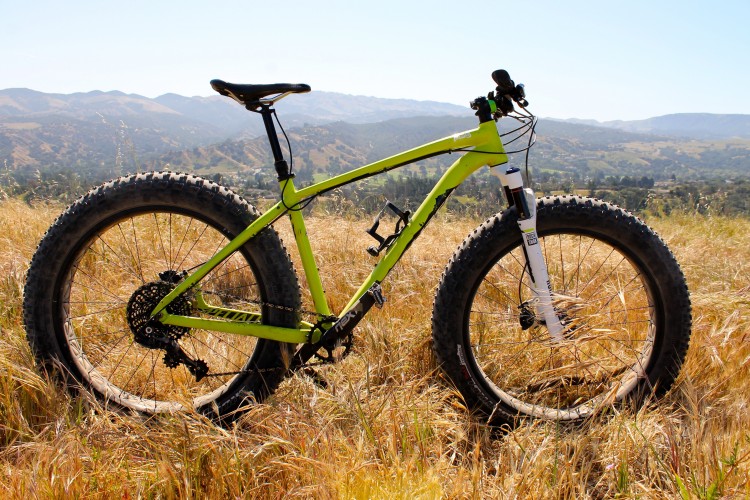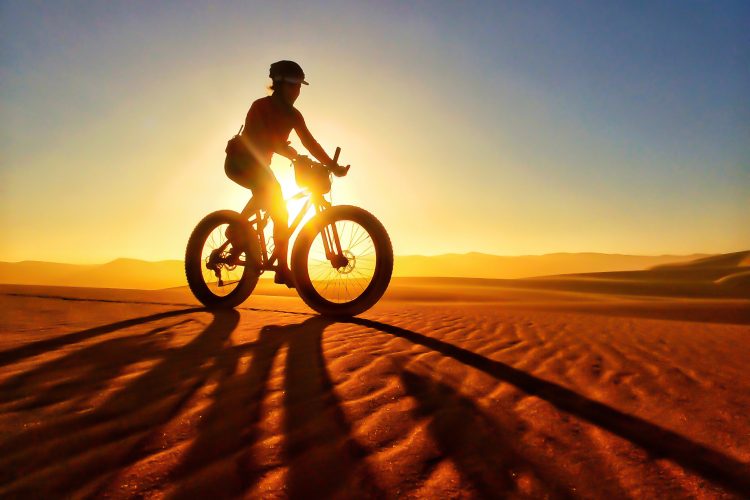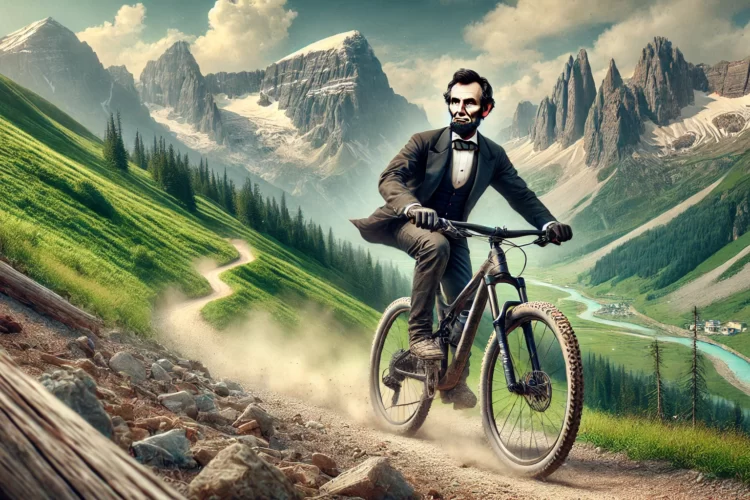
If you have been shopping for bikes lately, you may have noticed a peculiar bike niche gaining significant market traction, aside from the venerable 650b movement. Fat bikes, or snow bikes, have been around since at least the early 20th century, but in the past 1-2 years several manufacturers, both large and small, have starting crafting these once-obscure novelties for the masses.
Touted as the juggernaut of bicycles, many shops have actually started recommending fat bikes in lieu of other bikes thanks to their versatility, rollover-ability, and sheer gumption to conquer any terrain. Aside from being a blast in the snow, they are a hoot to ride on almost any trail, any time of year, extending a cyclist’s season and avoiding the dreaded trainer (boo). Best of all, they make you feel like you’re 8 years old again–you’ll be hard pressed to wipe that grin off your face!
Before you drop your cash on a fat bike and venture out into the winter wonderland aboard your new steed, here are 10 things you need to know:
1. Why ride one?
Fat bikes are mountain bikes–they behave like mountain bikes, and you can ride them everywhere. They are also great beginner bikes, and aren’t just for those who live on the Planet Hoth.
2. Bike selection
In the past year, the fat bike market has exploded, and companies are now offering frames in almost every conceivable material: aluminum, carbon, titanium, bamboo, real steel, and Wal-Mart steel. Most fat-bikes are fully rigid beasts, but in the past two years suspension forks have been honed and mass-produced, and several smaller builders are offering fully custom, full-suspension frames. As with any bike purchase, zeroing in on the right fatbike depends principally on the type of riding you plan to do, but mostly on your budget, and whether or not you’re married.
For more information on the fat bikes currently available, check out maddslacker’s three-part fat bike buyer’s guide:
3. Application
Traditionally, fat bikes, also known as fatties or fat tire bikes, handled differently than other mountain bikes. That made them both fun and weird. However, many newer models are similar to “normal” mountain bikes, which have slacker head tube angles, lower stand-over heights, thru axles, and tapered head tubes that let you rule the mountain.
The differences that fatties offer are actually what make riding a bike like this interesting: wider tires provide more traction in both dirt and snow, and they climb uphill like no other bike can. Their voluminous tires provide some suspension (40-50mm), though I am the first to admit that a rigid bike will always be a rigid bike. Fortunately, you do not lose the same energy due to pedal bob, so the fun bouncy feeling you get is not wasted effort.
I ride my fat bike year-round on flat, snow-covered meadows, steep and deep backcountry trails, my local singletrack trails, around town, and even double diamond trails during warmer months. They corner better than almost any bike and are fun to lock up and slide around on packed snow/ice. Most trails are rideable year round, and there are a few groomed XC ski trails across the US that are now allowing fat bikes to tour.
4. Weather
Most people do not ride when it is cold because, well, it’s cold. Fat bikes offer a unique experience and allow you to explore familiar trails in a new light, but you have to think a little harder (read: smarter) before and during your ride if you want to stay comfortable. A little wind can drop the enjoyment factor exponentially if it is already cold outside, so a 12mph cruise on a flat, open field can be more brutal than a sheltered climb in similar weather. Humidity can make the cold feel colder too, so dress appropriately. High-alpine riding should be reserved for more experienced riders.
5. Clothing
Obviously, this depends on where you ride, but dressing in layers, and carrying a pack to store those layers, is the most important part of riding in the winter. It is just as easy to overheat, sweat, and suffer hypothermia when riding in the cold as it is to under-dress and be miserable. When riding during the Colorado winter, I prefer to wear my ski helmet and goggles, which provide a lot of protection and keep my face and head warm. Pogies, which are insulated covers for your hands, are the best way to keep your hands warm and avoid frigid digits. A good rule of thumb: dress like you are going skiing.
6. Hydration
Putting fluids in your tank is often more important in the winter than the summer, especially if you ride at high altitude, due to insensible respiratory losses. While your breathing rate increases, you may not feel the urge to consume water.
Protecting your water from freezing, however, is the most important challenge when fat biking during freezing temperatures. For shorter rides, carry an insulated water bottle and start with really warm or hot water. Some riders add electrolytes, alcohol, and other ingredients to change the freezing point of your water, but they rarely work well. Also, those solutes will ultimately make you more thirsty, so use them sparingly or not at all. I personally ride with a regular hydration pack filled with really warm water, and I make sure that I tuck the bite valve in my jacket between sips and blow the water in the tube back into the bladder. Neoprene hose sleeves can help, but will not prevent, water from freezing.
7. Pedals
Clipless pedals are fine for most winter riding, but flats are where it’s at if you ride in snow or powder… unless you actually enjoy frequently dismounting to knock packed snow out of your cleats.
8. Footwear
There is no substitute for warm, snug toes when riding in the winter. Having suffered frostbite several times, keeping my feet warm is my highest priority. In general, no special shoes are required as long as you have a well-insulated (preferably waterproof) shoe and wear thick insulated socks, but there are several excellent shoes and boots designed for snow riding.
Chemical toe warmers are essential, even if you keep them unopened in your pack “just in case.” Some riders put their feet in silver space blankets for reflective heat, and 45NRTH just released similar technology imbedded in their Jaztronaut shoe inserts (which are standard in their much-revered Wolvhammer boots).
Gaiters are essential if you are riding in deep powder, or for long periods of time with wind or blowing snow.
9. Tires
One of the sweetest things about fat bikes is the ability to run tires at low pressures–as low as 5psi. Read: mega traction and floatation. Lower pressures may damage the rim on technical trails in the summer, but too much pressure makes the bike feel rigid and bouncy. Typically, 8-10psi is ideal for most riders.
I also prefer to set my tires up tubeless, which is best done by your LBS unless you are crazy or awesome, or both. Tubeless fat tires can save over a pound of rotational weight (that’s huge), and often provide better traction. Always carry a spare tube regardless, and I would suggest using tubes for deep cold or adventure racing. I don’t know anyone who likes to change a tire with cold hands in a blizzard.
Studded tires are also available for sketchier firmament.
10. Emergency Items
If you plan to take any kind of bike on an epic backcountry journey, it is always a good idea to be prepared. That goes double when it is frigid outside. Travel with a lighter or fire-starter, space blanket, map, compass, pocket knife, and a light. Consider taking something to protect yourself (I prefer a Bazooka) from critters, zombies, and rednecks. Wildlife in deep winter forests are often more hungry and may be more prone to attack you, though this is very rare.
Better yet, do not ride alone. Tell a friend when/where you are going and when you will be back. Have a plan. If you do get injured in the backcountry and cannot get to safety, your chances of surviving overnight in the cold are much smaller, and there are usually far fewer riders (if any) in winter who may be on the trails to help you… or identify your body before bears eat it.
These 10 tips are a great starting point, but I could keep on writing! How about you? What are your top tips for mountain biking in the snow?






















6 Comments
Jan 4, 2014
Jan 9, 2014
Jan 19, 2014
Dec 1, 2017
Jan 19, 2014
Dec 28, 2020
For anyone interested in another take, you can read my article Curious About Beginner Fat Biking? Here's Your Intro Guide.
Winter is long here in Canada, and for those of us lucky enough to live near trails that are groomed for fat bikes, it's a great way to keep the legs spinning! And it's a fun sport in its own right.